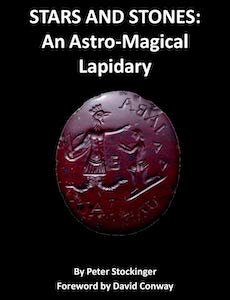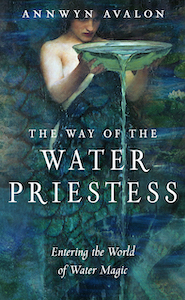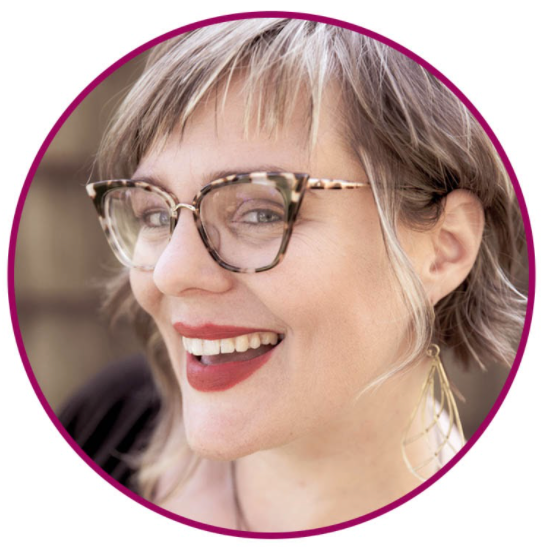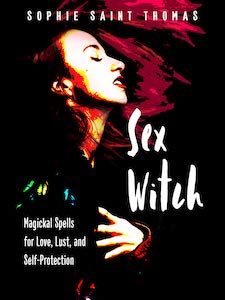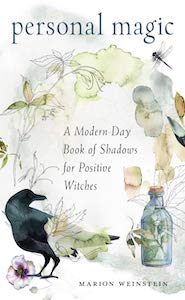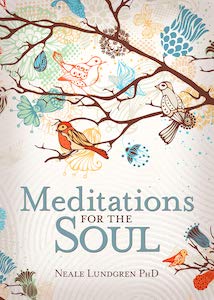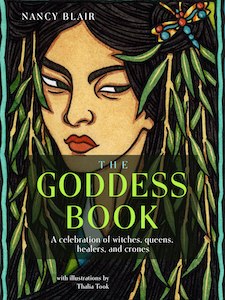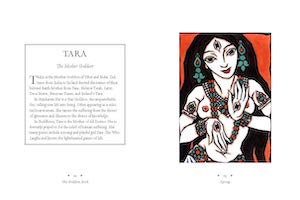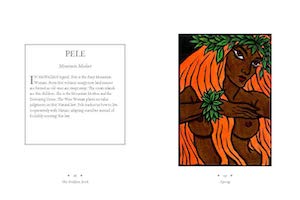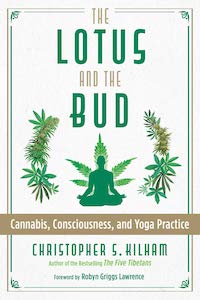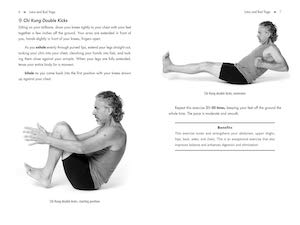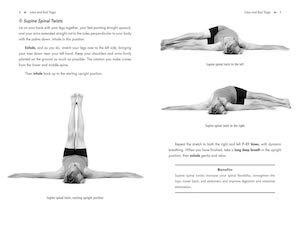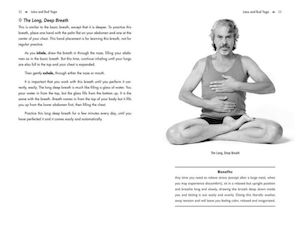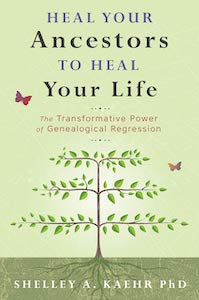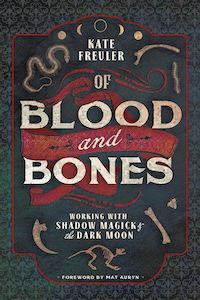
Of Blood and Bones: Working with Shadow Magick and the Dark Moon, by Kate Freuler
Llewellyn Publications, 0738763637, 312 pages, July 2020
“… we all have a dark side. It’s part of who we are. Even the most peaceful of light workers casts a shadow. We all possess the ability to hate, to be angry, to be bitter, and to want revenge….if we can acknowledge our own darkness honestly, we can control it and channel it into something productive…”1
Of Blood and Bones: Working with Shadow Magick and the Dark Moon by Kate Freuler is a highly recommended title for any who want to deepen their practice of witchcraft and magick in a more balanced and polarized way. Much has been written about the power of moon magick in its more traditional phases; the dark moon always being cloaked in mystery and more of a one-sided stance on how to use its energies. Ms. Freuler faces the topic of dark moon magic head on and begins a dialogue of understanding of its subtleties in a way that leads the reader towards deeper exploration of the dark moon tides within oneself and its inherent support of shadow magick and workings.
As the title suggests, this is not your ordinary book about moon magick, traditional shadow work, or darker Deities. This is an exploration of calling forth the shadow that is cast from a brilliance of polarized light and learning to navigate the terrain as you claim your own dark nature as a source of power. The tools employed on this journey are literally of blood and bone, ashes, remains, rust, decay, debris and more. Their uses and many of the more maligned and misunderstood practices associated with the work of dark magick such as cursing, hexing, blood magick, and others is given the proper context for use. Freuler honors the ethics surrounding the choice and provides enough information to allow the reader to explore these practices using free will and holding the intention of seeing the bigger picture.
Of Blood and Bones is separated into five parts and fourteen chapters. It is written in a way that provides the reader with the tools to go about the work of inner reflection early on in the reading so that ultimately this more informed way can be carried into the outer expressions of that practitioner’s craft. A disclaimer section at the beginning of the book sets the appropriate tone for what follows and lends itself to the example of offering due diligence around the forthcoming subject matter, some of which involves the legality and proper obtaining of the ingredients used.
The spellwork contained in each chapter holds true to the intention of breaking through the hesitancy around workings of a darker nature. Materials used, the how, and the why are all very carefully outlined providing multiple layers of discernment to be developed by the practitioner about their use and when they would be needed. A Spell Index at the end of the book provides easy reference without the need to search through the chapters. Recommended Resources and an ample Bibliography conclude the book, pulling everything together in a user-friendly way from start to finish.
The introduction, “It’s Not All Love and Light,” prepares the reader to take a look at all of the aspects of witchcraft and magickal workings. The reader is reminded that there are aspects of light and dark in all endeavors and for a synthesized and whole practice to develop we have to embrace all of the polarities within our practice. Ethics takes center stage throughout the book and the encouragement to allow those darker aspects that we all possess to come forward to be dealt with and acknowledged is the underpinning of becoming more informed in our practice.
“To be truly connected to nature, the seasons and the cycles of life, we must be balanced; we must acknowledge, accept and embrace the darkness of our spirits as fully as the light parts. This doesn’t mean that we should indulge in negativity and harmful behavior but rather accept these traits as guides and teachers in our personal growth. From there we can transform our lives…”2
“Part 1: Shadow Work and the Dark Moon Current” and the chapters contained within give a very through overview of everything that is needed to begin this journey of dark magick. Listings of Deities aligned with dark magick, moon tides, incense recipes, altars and rituals of dedication provide the reader with ample information to proceed more informed than when starting, now knowing that this work is deeply transformational and to expect to emerge from the dark forever changed.
“Part II: Blood and Bones” exposes the reader to the old ways of the craft and the repurposing of objects for magick, knowing their inherent power. Body fluids such as blood, semen, urine, menstrual blood, and saliva carry powerful and potent magick. Additionally, living a life very close to nature, animal parts were often employed in spells and rituals; their power derived from the earth itself and the specific energy that a particular animal carried. There were no magick stores and everything was seen as sacred and holding its own mantle of power.
“These (subjects) that people find so terrifying make up our very life energy. Blood, semen, urine, menses, bones, and even saliva are literally at the core of survival. Their presence creates life, and their absence takes life away. So, while these topics can be gory, gritty and gross, they speak to people on a primitive level as old as the earth…”3
“Part III: The Forbidden Craft” hones in on some of the more controversial topics surrounding shadow magick. Had the strong component of ethics that flowed through the book not been abundantly present, misunderstanding of the intention and the ultimate categorizing of this book with others that are wholly about revenge, retribution, misplaced power, and harm could have become a lost moment in discernment around what is not so clearly black or white, good or bad, or able to be defined by any of the usual semantics used. Curses, hexes, bindings, death magick, and more are fully discussed from the perspective of when these methods would be appropriately used and the greater ramifications surrounding the intention and its greater energetic effects on both the practitioner and the recipient.
“Chapter 8: A Witch’s Curios” offers the reader an inside look at some of the tools such as broken mirrors, rusty nails, bullet casings, graveyard dirt, hair and nails, and more that typically are not incorporated into spellwork. These are the objects of magick that lay discarded or of fearsome touch: all that lay at the threshold of death and all that are the necessary unwanted reminders of something not entirely of the light. The use for these objects and energies they carry are outlined and spells using items such as these are included. The ethical and legal aspects of collecting graveyard dirt or obtaining some of the other items is thoroughly discussed for informed decision in acquiring and using these as part of your magick.
“In the dark witch’s cabinet there are some things that are repulsive, some things that smell yucky, some things that are frightening, and some things that society as a whole just wants you to ignore. Grab your hand sanitizer and come on in…”4
Of Blood and Bones is a book that will definitely evoke strong opinions about its content. Much of what is provided would be considered by some to be less than wholesome magick, while I suspect others will delight in adding new perspective and tools to a practice that is already dedicated to shadow magick. What cannot be denied is that the compilation of this work clearly shows knowledge by Freuler of all aspects of a balanced practice of magick and respect and reference for those less mainstream practices. We are part of the natural world that at times can be uninviting, messy, unforgiving, overtly blunt, and all together disruptive in its nature. And, this is what makes for a practice that is fully integrated into both the decay and the new life that are part of a continual cycle of being.
There is more that I could say about the details of this book, but it would be a disservice and muddy the intent. This is work (and reading) that must be absorbed through experience and claimed by trial and error. This is a power and way of working that is ancient in all of the ways of that simple word, and so the inroads and understands go deep and reach far. There is much to digest in this book, but with each doing and reading, another mystery within the reader will be revealed — another option for practice will be shown. A deepening of connection to the world and work as co-creator of that light and dark will become who you truly are as a witch.
“As you emerge from your shadow work, you may find that everything around you seems different. This is because you are different. Your perspective has deepened and expanded, balancing the light and the dark…”5

Robin Fennelly is an Elder within the Assembly of the Sacred Wheel Tradition [www.sacredwheel.org]. She is a dancer, teacher, astrologer, author, ritualist and seeker of all things of a spiritual nature. Her writings and classes incorporate a deep understanding of Eastern practice and Western Hermetics and bring a unique perspective towards integration and synthesis of the Divine and Mundane natures of our being. She is a mother of five and lives in Eastern PA with her husband of 45+ years.


